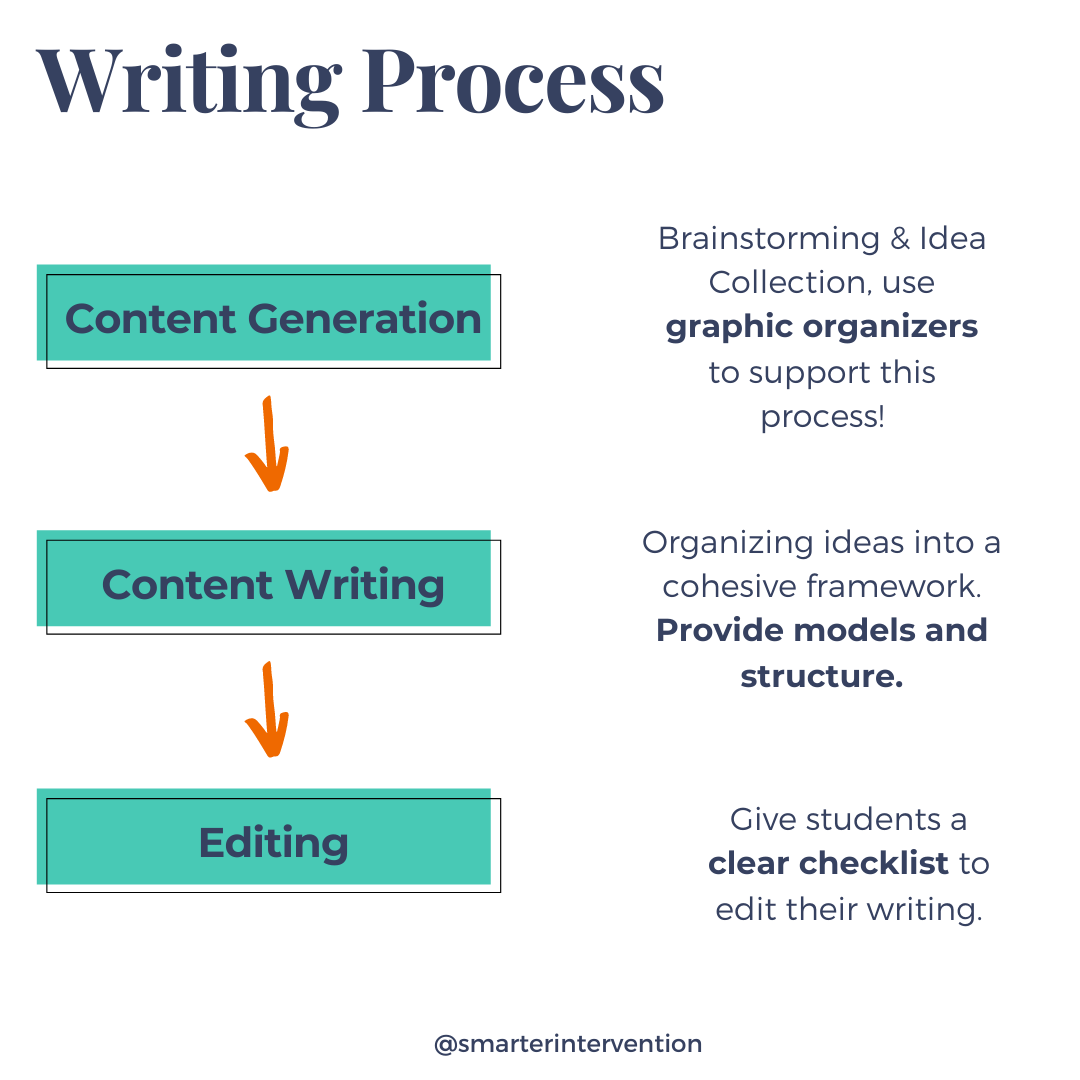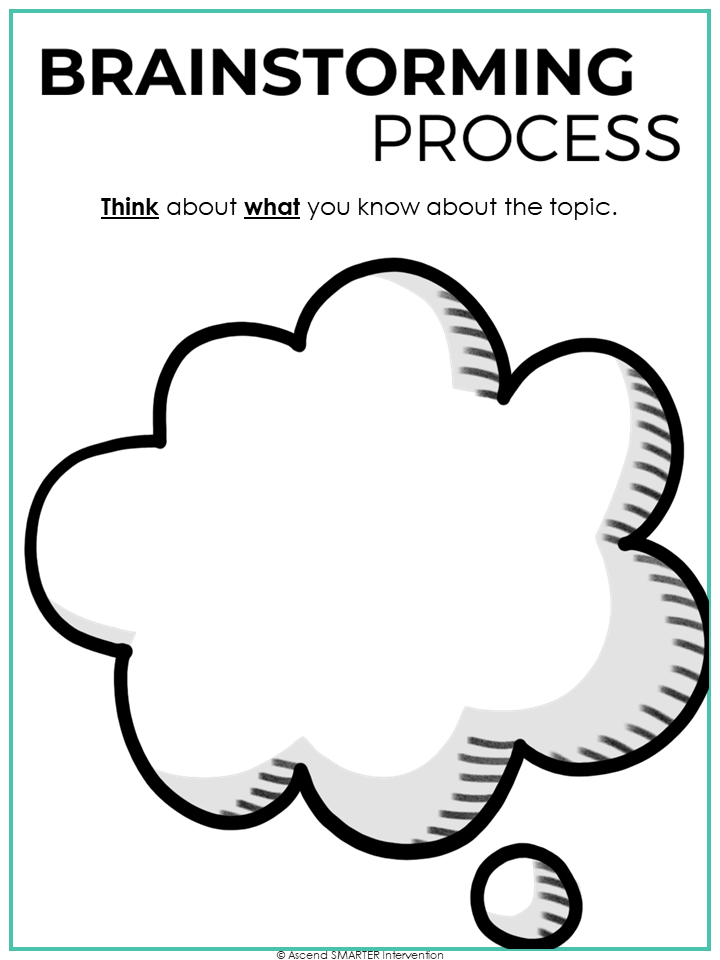How to Teach Paragraph Writing using a Research-Based Approach
There is no question about it - Writing is a complex process that requires significant executive functioning skills.
Which means, many students will have difficulty with it!
Executive functioning is basically the process our brain goes through in order to reach a goal (in this case finishing a writing assignment).
Many students need an explicit process to support writing.
Students need to understand the exact process to follow in order to support the required executive functioning skills needed for writing. For example, they need to be able to initiate (get started), plan, organize, self-monitor, etc. One of the best ways to support executive functioning is to break the task down into manageable chunks.
Let’s break it down, in order to complete a writing assignment we need to:
1 - Why are we writing? What do we know?
This is frequently referred to as the brainstorming process. Within the brainstorming process, we need to think first about WHY we are writing.
What am I being asked to write about?
What background knowledge do I have?
What research do I need to complete?
Additional Questions to Consider:
Am I writing a story? - This would be narrative writing that should follow a specific framework.
Am I sharing information? - This would be informative writing that should follow a specific framework.
Am I sharing my viewpoint? - This would be opinion writing that should follow a specific framework.
Am I trying to convince others to share my viewpoint? - This would be persuasive writing that should follow a specific framework.
Am I summarizing something? - This would be summary writing and should follow a specific framework.
Catching the drift here? Then once we know WHY we are writing we can start to think about what we already know.
Questions to Consider:
What information can I write down or dictate (for those who hate writing more than is needed) about the topic? We guide students by asking them to consider the 5 Ws.
Who? - Is there anyone related to the topic?
What? - Is there any action related to the topic (what action words/verbs can we use?)
When? - Is there anything related to time, sequence, etc. for the topic? Can I establish a setting?
Where? - Is there anything related to where for the topic? Again, what’s the setting?
Why? - What information can we provide about why (what describing words can we use?)
Once this step is done, we can move on. But we can’t move on until we’ve completed that quick process.
2 - Create a draft.
Once we’ve completed Part 1 of the writing process, we can move on to Part 2. At this point, we should have established WHY we are writing so that we can use the appropriate graphic organizer. Graphic organizers help us organize our writing process.
We have different organizers depending on what we are writing, but what we start to realize is that they all generally follow a very similar 5-part framework.
Questions to Consider
What is the structure of the paragraph? (Narrative, informative, opinion, persuasive, summary?)
Do I have all the necessary key details required for that type of paragraph?
Do I have an introduction and conclusion?
So our process would look like this:
One helpful strategy is to have students color-code each section. We love using rainbow writing. So for example, a student would code their introduction in red, key detail #1 in orange, key detail #2 in yellow, key detail #3 in green, and the conclusion in blue. This helps support the self-monitoring process because they can make sure they have everything they need.
3 - Edit.
Now, nearly every student we have ever worked with will give a quick glance over it and then let you know it looks good.
Even when…it doesn’t.
One way to help support this process is to have students edit each sentence independently.
To help students remember this process, we use the mnemonic CAMPS.
Questions to Consider
Do I have all the capitals I need and no extras? (We should only have a capital at the beginning of the sentence and for all proper nouns),
Does the paragraph look good? (Thinking about spacing and handwriting)
Does the paragraph sound good? (Thinking about sentence structure and paragraph structure, does this sound like spoken language and get the point across)
Do I have all the punctuation I need and no extras? (We should have final punctuation and any necessary commas, quotations, etc.)
Does the spelling look good?
Again, the key here is to edit EACH sentence BEFORE putting the final paragraph together. If we can edit when all the sentences are still separate, our brain is better able to attend to and focus on what needs to be done.
As soon as we have a whole slew of text shoved together, we start skimming and missing all the necessary edits.
So there you have it, the simple three-step process to writing that will make a massive difference in a student’s writing! Want these graphic organizers and hundreds of other research-based resources? Click below to grab them now!










